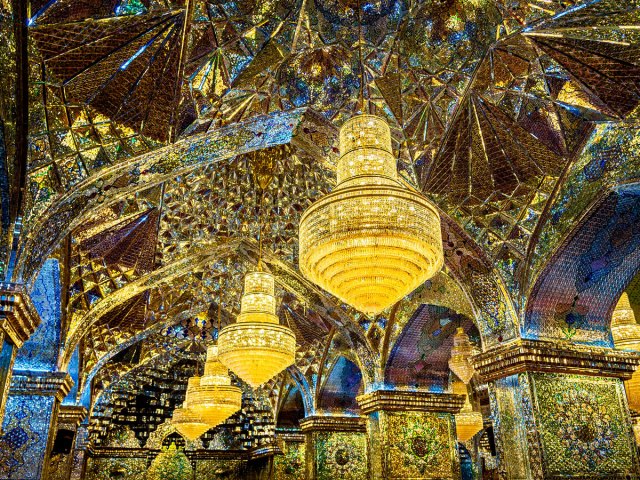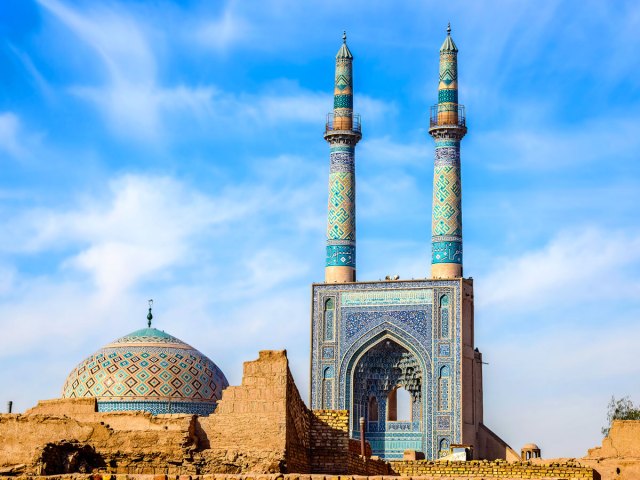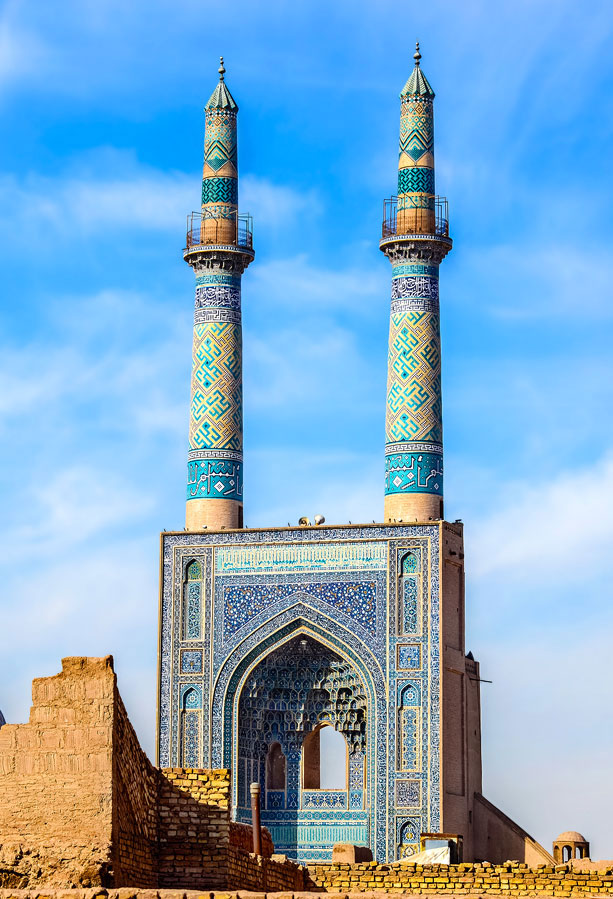Art can be found in all aspects of everyday life, whether in historic museums or the back wall of an unassuming alleway. But in particular, large-scale murals possess a certain wow factor — using intricate pieces and varied mediums to create bold statements in grand proportion. From ornate ceilings in ancient cathedrals to whimsical urban parks, discover these seven stunning mosaics and murals around the world.
Cattedrale di Monreale – Palermo, Italy

They say that all that glitters is not gold, but in the case of Cattedrale di Monreale (Monreale Cathedral) in Palermo, Italy, the adage proves false. With a mosaic made from nearly 5,000 pounds of pure gold, the cathedral’s interior is truly luminous. Listed as a UNESCO World Heritage Site, Monreale Cathedral is considered to be one of the most beautiful churches in Sicily, and with its gold-laden mosaic, it’s easy to see why.
Built between 1170 and 1189, the mosaic was constructed by craftsmen from Constantinople. Installed throughout the cathedral’s nave, walls, and ceilings, the work features Christian saints and important scenes from the Bible. Naturally, the mosaic’s centralized figure is Jesus Christ, who takes up nearly 300 square feet of space in the aspe above the altar.
Shah Cheragh – Shiraz, Iran

Since Shah Cheragh translates to “King of Light,” it comes as no surprise that the interior of this funerary mosque is spectacular. Given its translation, however, it is rather surprising that the mosaic was not built for a king. Instead, Shah Cheragh’s dazzling glass mosaic was designed with a queen in mind.
In the 14th century, Queen Tash Khātūn requested that the traditional Persian artform of mirrored mosaics be inlaid inside the mosque, which had been a pilgrimage site for Muslims for centuries. In order to be fit for a queen (Queen Tash Khātūn was eventually entombed inside the mosque), ornate chandeliers were hung from the ceiling and the mosaic was finished with pieces of silver. As a result, the mosque’s interior resembles a brilliant mirrorball that continues to draw visitors today.
Parc Güell – Barcelona, Spain

Built between 1900 and 1914, Parc Güell was designed by famous Barcelona architect Antoni Gaudí. Funded by Eusebi Güell, the entrepreneur who discovered Gaudí, the park was built to create a stylish place for Barcelonians to gather, while also honoring the Modernist art movement that was sweeping through the city at the time.
Located in Carmel Hill, Parc Güell is commonly recognized as one of the most accomplished mosaics around the world. Using ceramics, glass, broken marble, and tiles, Gaudí used his signature sense of color and whimsical sensibility to create an otherworldly effect. In addition to the undulating mosaic walkway that overlooks the city, Parc Güell is known for “El Drac,” a tiled lizard which is said to bring good luck to those who touch it.
St. George’s Church – Topola, Serbia

Also referred to as the Oplenac Mausoleum, St. George’s Church contains nearly 40,000 square feet of inlaid mosaic inside its walls. The brainchild of King Peter I, the mausoleum in Topola, Serbia, was commissioned in 1910, but construction was soon halted by successive wars.
Decades later, King Peter’s successor commissioned Puhl and Wagner, a glass company from Berlin to create the exquisite mosaic inside the church. The work depicts 1,500 figures from Serbian monasteries and contains pieces of glass in 15,000 different hues. But the artwork doesn’t end in the nave — more mosaics can be found in the crypt below the church with dozens of royal tombs.
Madaba Map – Madaba, Jordan

Located inside St. George’s Church in the town of Madaba is one of the most historic mosaics in the world. When the Greek Orthodox church was being built in 1884, construction workers discovered an ancient relic from the Byzantine era: the Madaba Mosaic Map. While experts believe the original piece was between 50 and 82 feet long, only one-quarter of the map remains undamaged and can be seen on the floor of the church.
Created in 560 CE, the mosaic displays an intricate map of the Holy Land using thousands of tiles to depict ancient biblical scenes. Featuring fish swimming in the Jordan River, the gates of Jerusalem, and Mount Sinai, each scene is labeled with captions in Greek, with over 150 inscriptions in total.
Mausoleum of Galla Placidia – Ravenna, Italy

Located in an unassuming brick building, the Mausoleum of Galla Placidia houses the remains of a famed Roman empress who died in 450 CE. As one of eight UNESCO World Heritage Sites in Ravenna, Italy, the mausoleum’s interior is laden with mosaics from the fifth century that depict Christian iconography.
While the lower walls are made of marble, the rest of the interior is covered in a magnificent tile mosaic. Featuring scenes that depict the triumph of eternal life over death, the work portrays saints, shepherds, and several other icons of Christianity. The most impressive feature is the mosaicked pattern of stars set amidst a dark blue sky on the arched ceiling. The work of art is so stunning that it inspired Cole Porter to write the jazz song “Night and Day” in 1932.
Jameh Mosque of Yazd – Yazd, Iran

Although the Jameh Mosque of Yazd is now used for the town’s Muslim congregation, the building originated as a Sassanid fire temple. The oldest tilework in this Iranian mosque dates back to 1365 CE, but since the mosque underwent a 43-year renovation in the 20th century, the mural remains in perfect condition.With mosaic patterns laid throughout the interior, the double-dome chamber contains one of the structure’s most astonishing pieces — a massive faience mosaic.
This tile-making technique was common prior to the development of glass. To create the faience used inside the mosque, quartz dust or sand had to be melted, molded, and then glazed before it was inlaid into delicate mosaic patterns of blue, green, yellow, and red.
More from our network
Daily Passport is part of Inbox Studio, which publishes content that uplifts, informs, and inspires.























